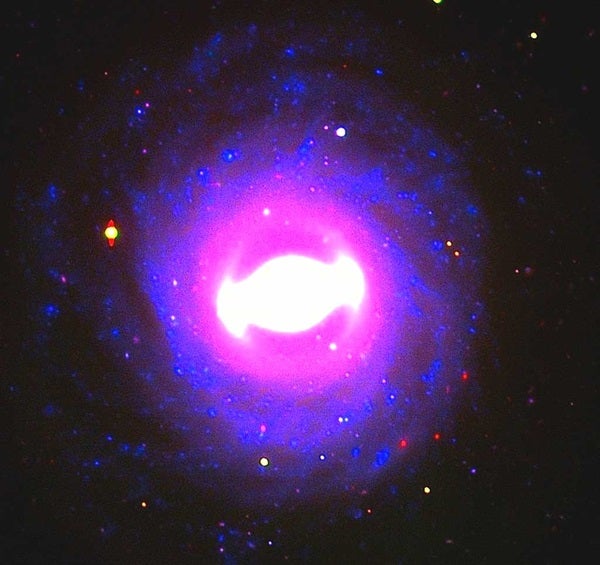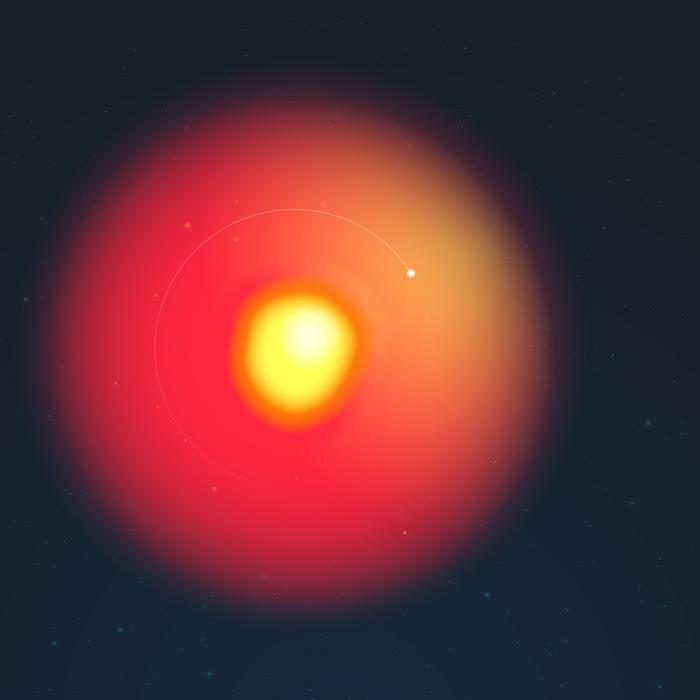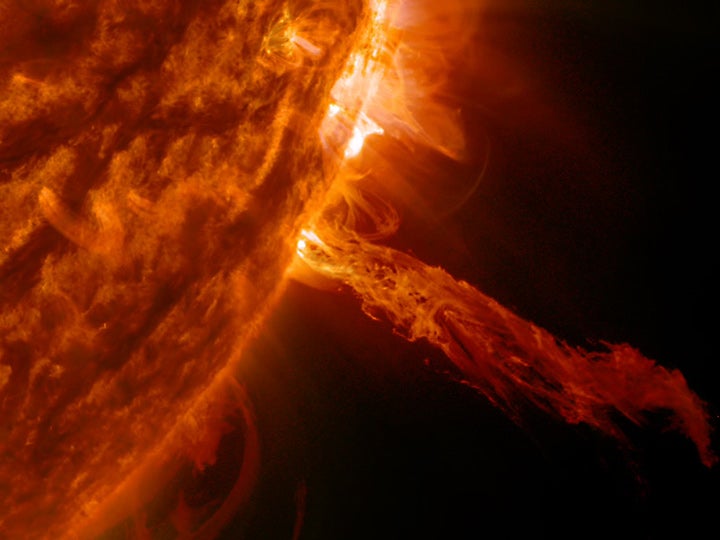The light echo seen from SN 2009ig is only the sixth discovered from a type Ia supernova, and it is the most luminous of the echoes.
An echo on Earth results when a loud sound is heard directly and again after being reflected by a wall to the listener. Because of the longer path taken by the redirected sound, it is heard slightly later than the original noise. A light echo works the same way. Direct rays from the flash of a supernova are received at Earth while some rays are scattered by particles in the host galaxy and redirected to Earth. As with sound echoes, the time delay and light-echo amplitude depends strongly on the distance between the source and the reflecting surfaces.
Scientists with the Lick Observatory Supernova Search discovered SN 2009ig less than a day after it exploded in the galaxy NGC 1015, located127 million light-years away in the constellation Cetus the Whale. SN 2009ig was the brightest supernova of 2009 and was well-studied by amateur and professional astronomers around maximum brightness.
Observations with the Large Binocular Telescope and the Kitt Peak 4-meter telescope began in 2010 after SN 2009ig had faded by a factor of 10,000 from its peak brightness. “We planned to study how radioactive elements generated in the explosion decay with time, but we were surprised to see the fading abruptly halt. This was not a supernova we expected to produce a light echo,” said Peter Garnavich from the University of Notre Dame in Indiana.
Scientists classified SN 2009ig as a normal type Ia event. Type Ia supernovae are thought to be thermonuclear detonations of remnant cores of stars known as white dwarfs. This type of supernova was used to discover that the expansion rate of the universe is accelerating, implying that a mysterious dark energy dominates the content of the universe. Yet the progenitors of type Ia explosions remain uncertain. “We have used these explosions as precise candles to measure cosmological distances,” said Garnavich. “It would be great to know where they come from.”
There are two competing theories on how white dwarf stars become unstable and explode. The single-degenerate scenario has a large star donate mass to the white dwarf until instability is reached. The double-degenerate model proposes that two white dwarfs combine to reach the instability limit. The dusty messy neighborhood around SN 2009ig supports the single-degenerate scenario.










